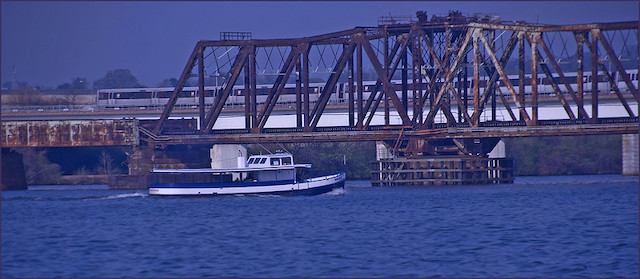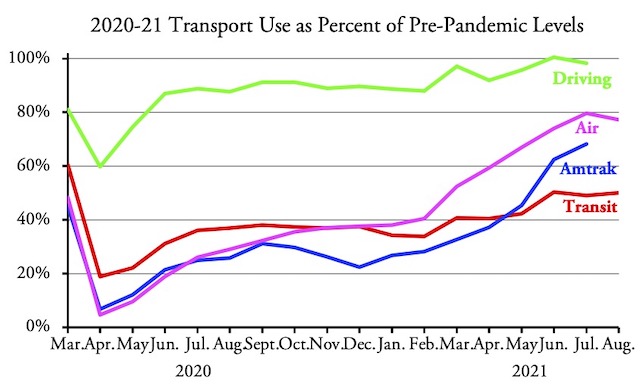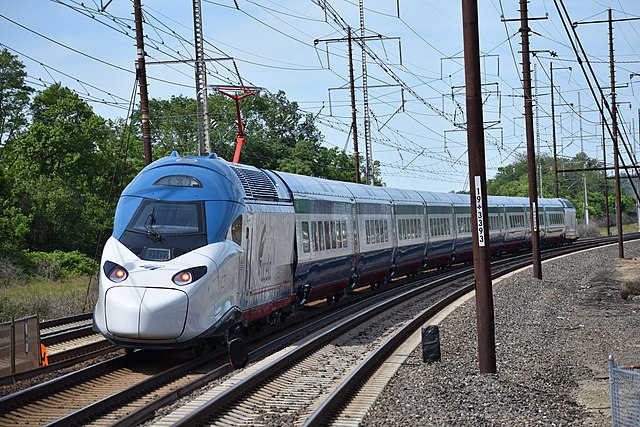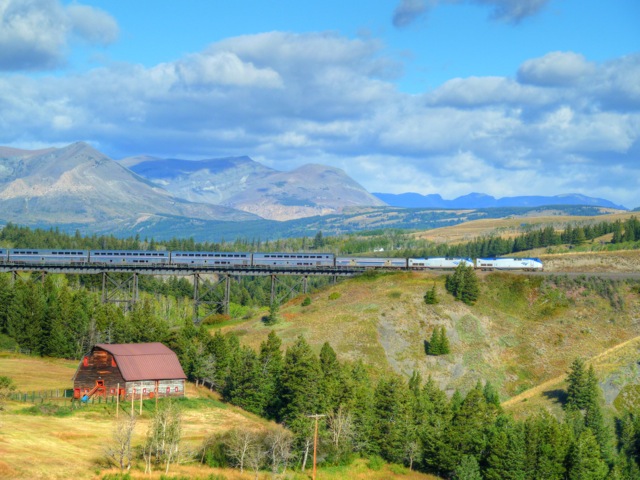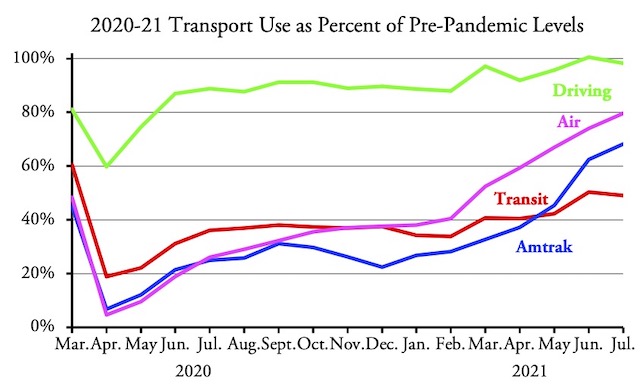Unlike light rail, which means low-capacity transit, heavy rail is supposed to be high-capacity transit. But Virginia politicians effectively reduced the capacity of the DC Metrorail system when they demanded, over the objections of the Federal Transit Administration and Secretary of Transportation, the construction of the multi-billion-dollar Silver Line to Tysons Corner. Now Virginia politicians want taxpayers and auto drivers to spend tens of billions more rectifying that mistake.
A Yellow Line train crosses the Potomac River on an underutilized bridge that was ignored in WMATA’s analysis of alternatives to deal with the congested Blue-Orange-Silver lines river crossing. CSX’s Long Bridge is in the foreground. Photo by Ron Cogswell.
When the Silver Line opened, the Blue Line was already running at full capacity. Since the two lines, along with the Orange Line, use the same crossing of the Potomac River into DC, adding Silver Line trains meant cutting Blue and Orange Line trains. The number of Blue Line riders lost probably exceeded the number of Silver Line passengers gained. Continue reading

